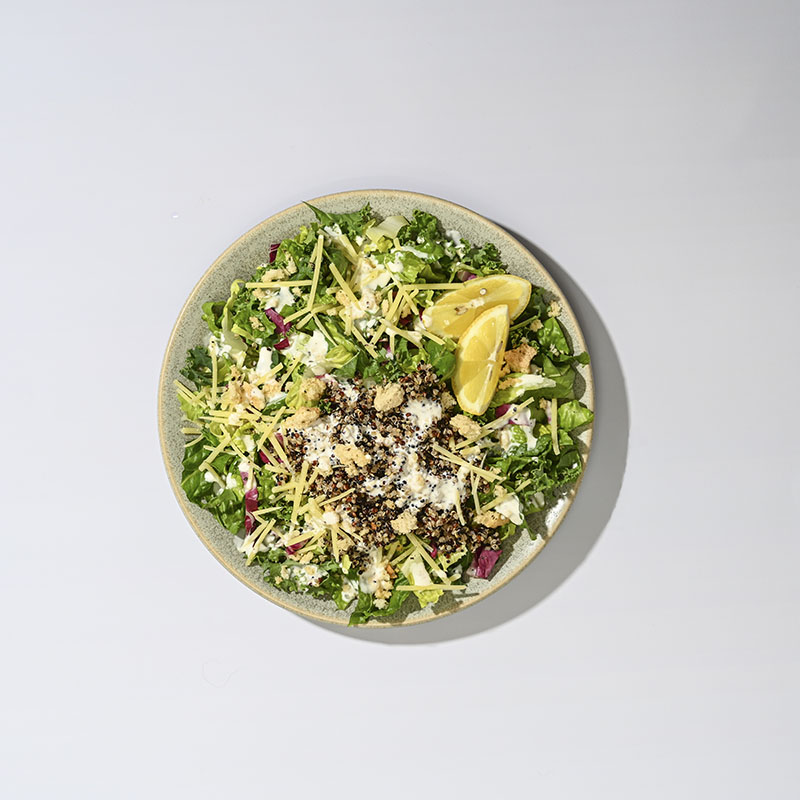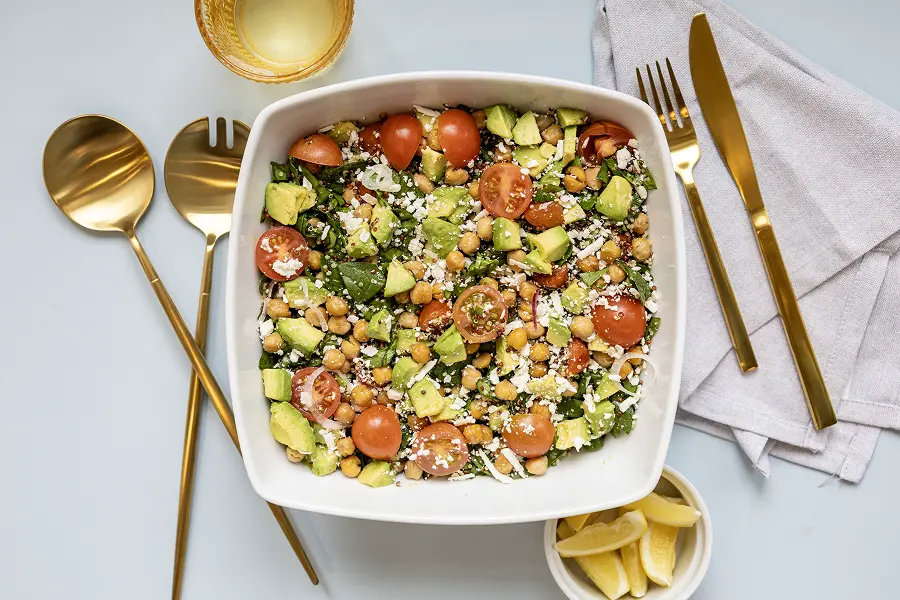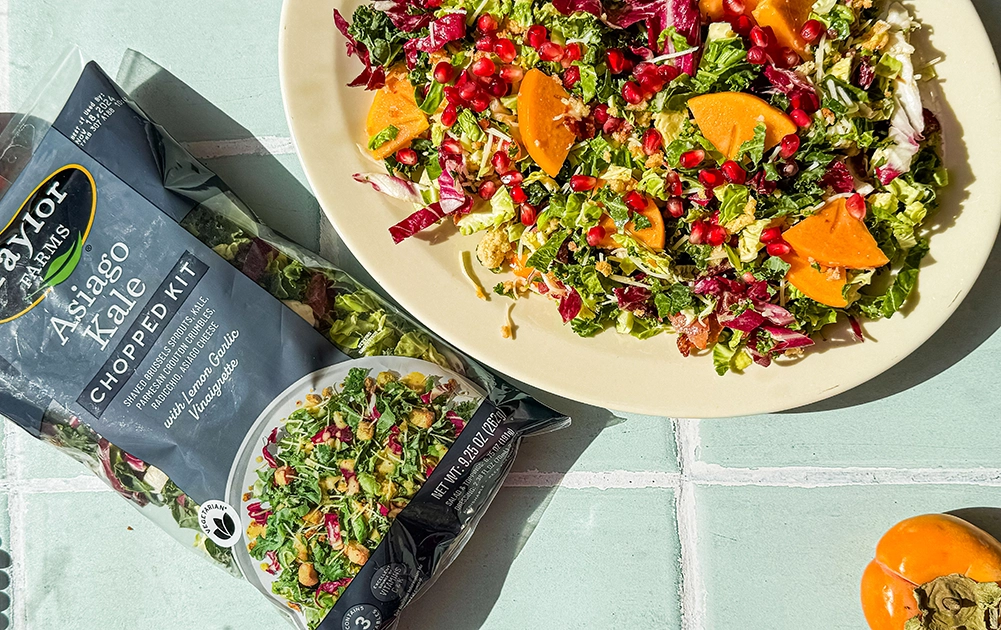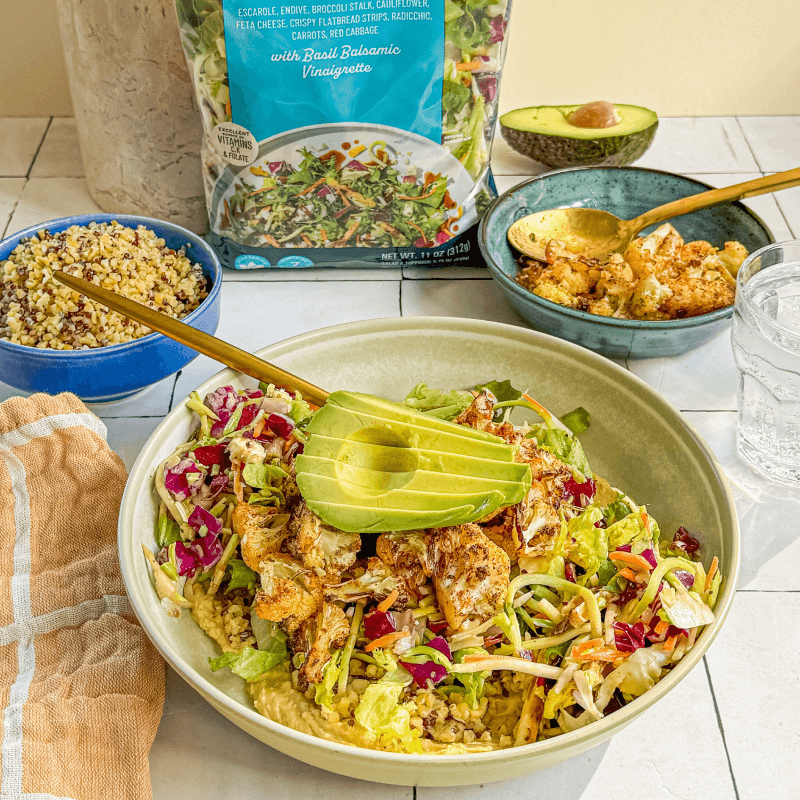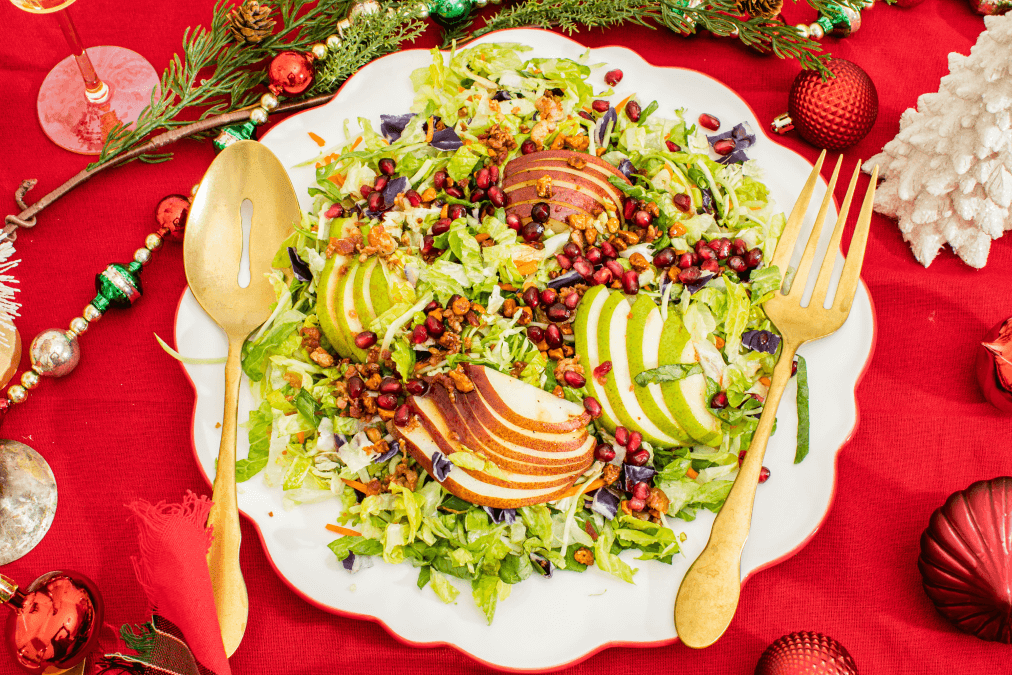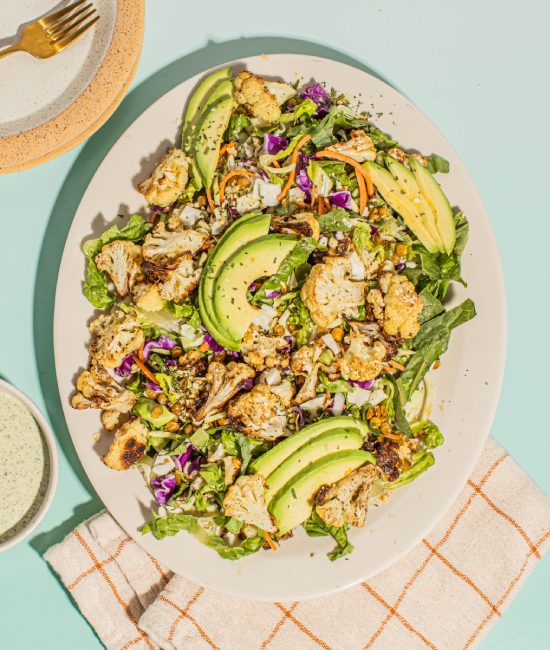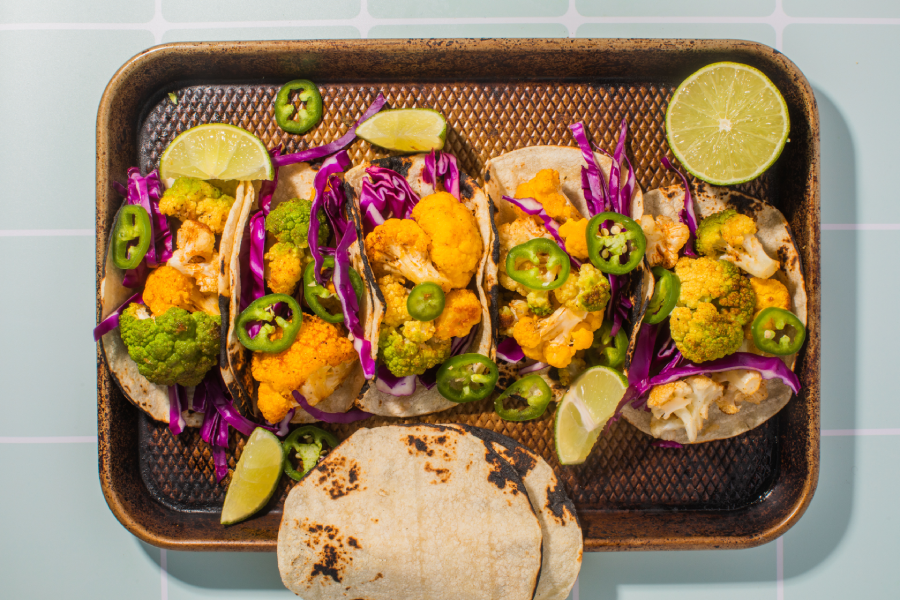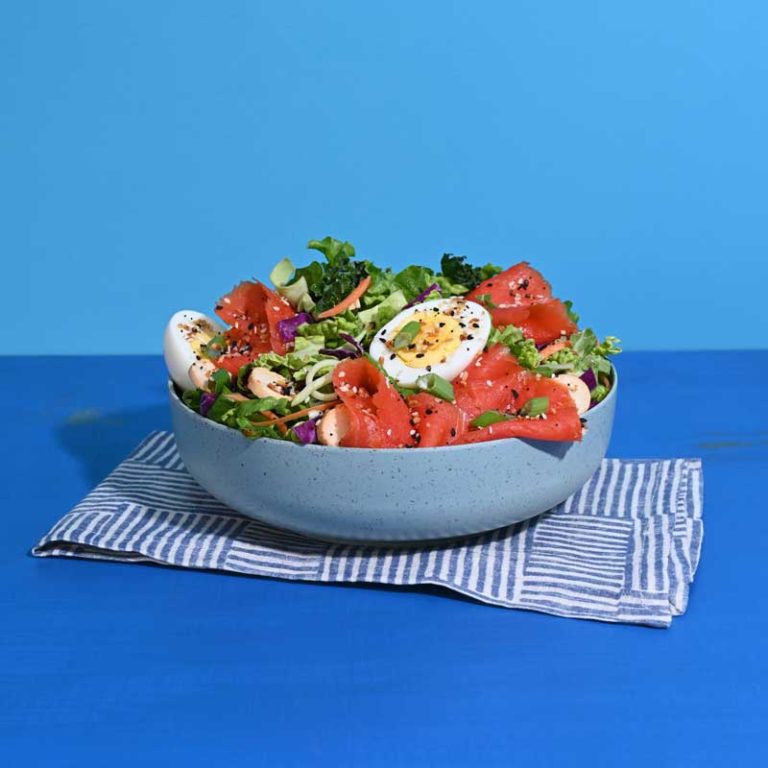Ingredients
- 1 Taylor Farms Organic Kale Caesar Chopped Salad Kit
- 1 cup tri-color quinoa
- 1 lemon
Directions
- Cook the quinoa to the brand’s recommendation. While the quinoa is cooking, cut a wedge of lemon.
- Assemble the chopped kit, top with quinoa, squeeze a lemon on top, and enjoy!
Wait, There are Three Colors of Quinoa?
Oh, yes. Tri-colored quinoa, sometimes referred to as rainbow quinoa (a much more fun name, in our opinion), is a blend of three different types of quinoa seeds: white, red, and black. But the differences don’t end with just the color — each type has its own unique properties:
- White quinoa is the most common variety you’ll encounter. It has a light flavor that is somewhat nutty and a texture that is quite fluffy when cooked.
- Red quinoa has a richer, slightly earthier flavor compared to the white variety. It also maintains its shape better after cooking.
- Black quinoa has an even more pronounced, almost sweet flavor. It has a slightly firmer texture compared to red and white quinoa.
Although you can certainly go with a single variety of quinoa for this recipe, tri-colored quinoa is optimal, as it offers not just a more colorful final product but a more diverse blend of flavors and textures.
How Did All These Colors Come About?
Quinoa originated in the Andean region of South America, where it was domesticated thousands of years ago for human consumption. The different colored quinoa varieties exist thanks to natural variations in the plant species. Over time, farmers have done some selective breeding to bring out different attributes—similar to the different varieties of crops like corn, wheat, and apples. Regardless of what color you go with (or all three), you’ll always get a nutrient-rich superfood grain full of amino acids and proteins, so fret not!
Find all things Caesar, from Caesar recipes to ready-to-eat products.
Check out all of our delicious Caesar Salad Recipes!
